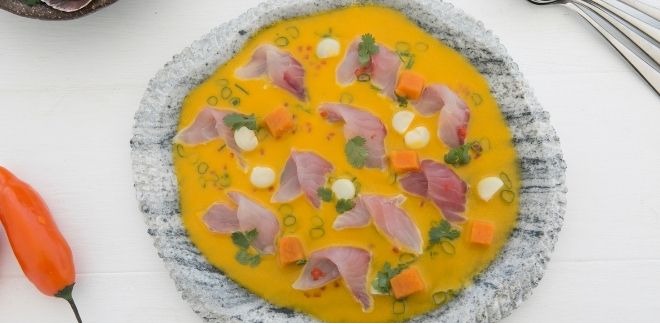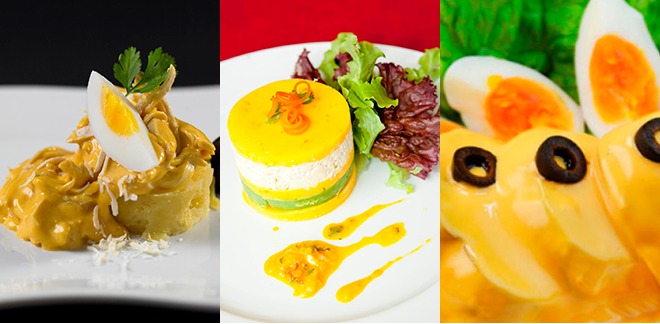Mackerel: 5 delicious ways to prepare one of the most nutritious fish from Peru
Síguenos en:Google News
Although its scientific name is intimidating – Scomber japonicus peruanus – the nutritious value of this mackerel is unquestionable. This species belongs to the group of dark meat fish that is recommended for human consumption due to its high level of omega 3 fatty acids.
According to nutritionist D'Janira Paucar, this fatty acid "contributes to the development of children's intelligence, helps prevent anemia and malnutrition, and it also lowers blood cholesterol, as well as other benefits. Omega 3 is only found in fish meat.
Marine vitamins
Mackerel has high levels of vitamin A which strengthens bones, teeth and soft tissues, it contributes to the formation of the retina, prevents infectious diseases and benefits the heart and kidneys.
It also contains vitamin D, which has a positive influence on the immune and nervous systems, and helps us to absorb calcium, which is good for our bones. Minerals such as potassium, phosphorus, magnesium, iodine and iron are all present in its DNA.
From the sea to your table
If you want a nutritious diet, make sure to include a portion of mackerel. In fact, for every 100 grams of fish, the human body is supplied with 1.9 grams of omega 3 (needed to maintain energy). Here are some options to enjoy it to its fullest.
Sautéed. Cut two medium sized mackerels into fillets, season with salt and pepper, dip in some chuño flour, and place them in the frying pan until they turn golden brown. Set aside. Then, in another previously oiled pan, add a handful of chopped white onion, carrots and snow peas. Sauté for one minute and add salt, pepper, 10 g hondashi (processed bonito fish stock), garlic and ginger. Toss and add a dash of white wine. Toss three more times and add a little cabbage (cut into small squares). Let it rest for 30 seconds and add broccoli, bean sprouts and the fish. Mix in the oyster sauce, sauté for a few more seconds and then serve.
Causa. Boil 1 kilo of yellow and pink potatoes. Once the potatoes are ready, peel them and mash them to create a dough that you should then season with yellow ají pepper paste, lemon and salt. Set aside. For the filling, open a tin of mackerel and add the fish to a bowl, then add some diced tomato and onion, mix and soak everything in lemon juice. In a bowl, spread a layer of dough, then another layer of avocado and on top of it the filling. Cover everything with another layer of potato and enjoy.
Rainbow salad. In a bowl, combine green beans, peas, spiral pasta, carrots and beets, all diced and cooked. To this, add chopped parsley and pieces of tinned mackerel which have previously been marinated it in lemon. For the dressing: mix a spoonful of honey, a spoonful of mustard, a spoonful of salt, mayonnaise and a splash of water.
Ceviche. Dice two mackerel fillets and place them in a bowl. Add some freshly chopped ají limo peppers and cilantro, combine and then add some tiger’s milk to the mix. Mix everything together and then add some julienned onions. Serve with zarandaja soup, in the Piura style. Sweet potato, corn, cancha (toasted corn) or fried yuca would also be delicious.
Tiradito. Fillet the mackerel in 8 cm long x 2 cm wide strips and place on a flat plate. On top, add chopped cilantro and ají limo peppers. Set aside. For the yellow ají cream, you must first boil the peppers without seeds, then remove the skin and add them to a pan with oil together with a handful of diced onion and two minced garlic cloves. Add 25 ml of white vinegar and wait until a paste has formed. Let it cool down for a few minutes, transfer the mixture to the blender and add 50 ml of oyster sauce, salt to taste and another 25 ml of vinegar. Liquefy at full speed and add a few dashes of oil. Let it rest until cool. Once ready, sprinkle the pasta over the fish and decorate with slices of onion and sesame seeds.
Sources: La Vanguardia/ A comer pescado/ US National Library of Medicine








